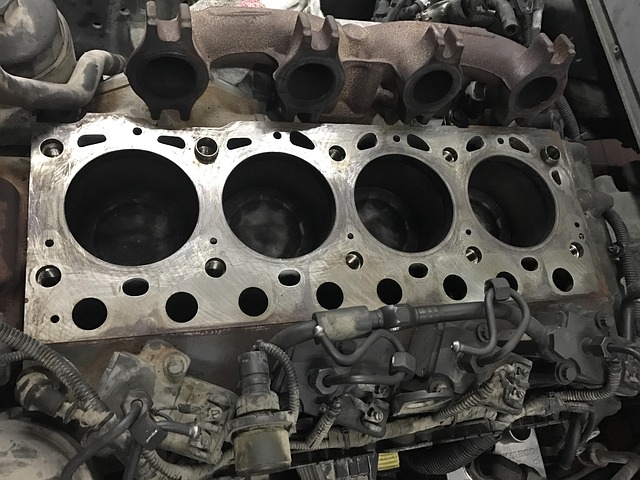Looking to register your car in California? It’s a straightforward process, but understanding the requirements is key. This guide walks you through every step, from gathering essential documents for VIN verification to submitting applications and fees at the Department of Motor Vehicles (DMV). We’ll also cover receiving your registration certificate and license plate. Ensure a smooth experience with our comprehensive walkthrough, focusing on crucial aspects like VIN verification.
- Understand the Requirements for Car Registration in California
- Gather Necessary Documents for VIN Verification
- Perform a Vehicle Identification Number (VIN) Check
- Submit Applications and Fees to the Department of Motor Vehicles (DMV)
- Receive Your Registration Certificate and License Plate
Understand the Requirements for Car Registration in California

Before you begin the registration process, it’s crucial to understand the requirements for car registration in California. The Golden State has specific guidelines that vehicle owners must adhere to. One key requirement is the accurate and up-to-date Vehicle Identification Number (VIN) verification. This involves confirming the VIN on the vehicle matches the information provided by the manufacturer.
Additionally, you’ll need to ensure that your car meets all safety and emissions standards set by the state. A valid registration also requires proof of insurance and completion of necessary forms. Considering these factors, many California residents opt for convenient services like mobile vin inspection or a vin inspection done by a trusted professional to streamline the registration process.
Gather Necessary Documents for VIN Verification

To register your car in California, you’ll need to go through a process called VIN (Vehicle Identification Number) verification. Before heading to the DMV, make sure you have all the required documents. One crucial item is the Certificate of Title from the previous owner, along with a valid registration and proof of insurance. For a seamless experience, consider using a mobile vin verifier or having a vin inspection done before you begin.
Additionally, gather any other relevant paperwork, such as a bill of sale or purchase agreement that includes the VIN. These documents are essential for establishing your ownership and ensuring the car’s history is accurately recorded. Remember, accurate documentation will speed up the registration process at the California Department of Motor Vehicles (DMV).
Perform a Vehicle Identification Number (VIN) Check

Before registering your car in California, it’s crucial to perform a Vehicle Identification Number (VIN) check. This step is essential for verifying that the vehicle matches its listed details and history. A VIN inspection ensures that there are no discrepancies between what the seller claims and what the actual vehicle data reveals. In California, you can easily conduct this vin verification through various online services or by visiting a local DMV office.
For added convenience, consider utilizing mobile vin inspection tools that allow you to perform a VIN check right from your smartphone. These mobile vin verification apps make the process swift and hassle-free, helping you ensure that the car you’re planning to register is genuine and free of any hidden issues. This step is an important part of navigating California’s registration process, ensuring you have a smooth and legitimate transaction.
Submit Applications and Fees to the Department of Motor Vehicles (DMV)

After gathering all the necessary documents, it’s time to submit your applications and fees to the California Department of Motor Vehicles (DMV). This step is crucial in the car registration process. You’ll need to fill out the appropriate forms, which can often be found on the DMV website, and include them with your application package. One important aspect of this process is the VIN verification, ensuring that the vehicle identification number (VIN) is accurate and matches the make and model of the car.
You may choose to conduct a mobile VIN verification or opt for a traditional inspection to ensure all details are correct. This step prevents any potential issues with your registration and helps in maintaining accurate vehicle records. Remember to submit all fees along with your application to avoid delays in processing your car’s registration in California.
Receive Your Registration Certificate and License Plate

Once your vehicle’s registration application is approved, you’ll receive your Registration Certificate and License Plate. This crucial step completes the formalities required to legally operate your car in California. The certificate confirms that your vehicle meets all safety and emission standards, while the license plate serves as a unique identifier for your vehicle.
Remember, before taking your car on the road, it’s essential to ensure the accuracy of the information on these documents. A mobile vin verification or inspection using a reliable mobile vin verifier can help verify your vehicle’s history, ensuring that all details, including the Vehicle Identification Number (VIN), are correct and up-to-date.
Registering a car in California involves understanding key requirements, gathering essential documents for VIN verification, performing a Vehicle Identification Number check, submitting applications and fees to the DMV, and finally receiving your registration certificate and license plate. This streamlined process ensures your vehicle complies with state regulations, facilitating safe and legal operation on California roads.



